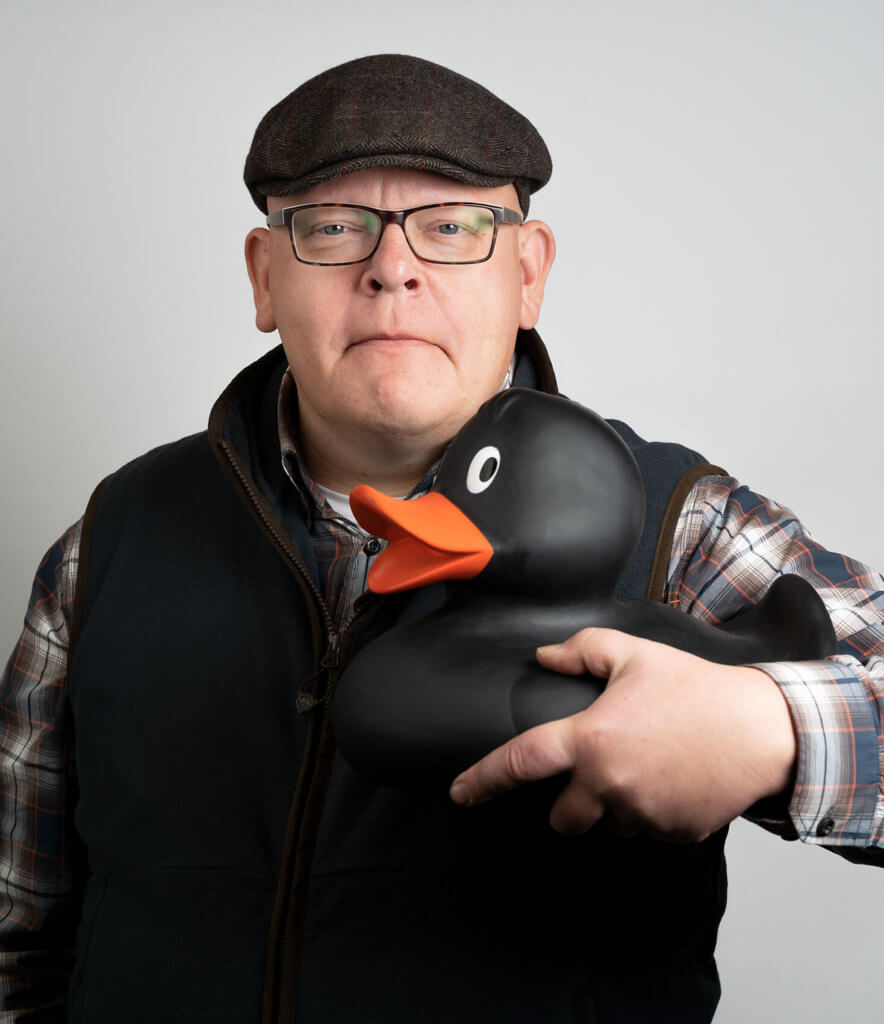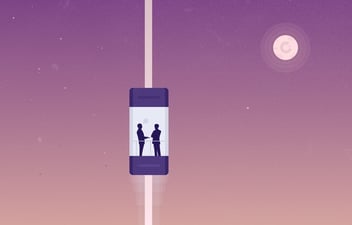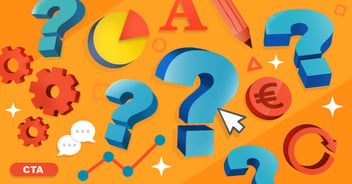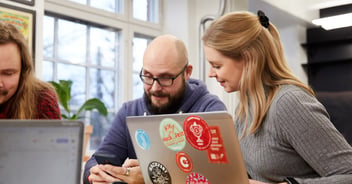Talking about these two approaches that seem like they’ve come from two different universes in the same article may seem strange at first. Agile development or, more generally, experimentation culture is now en vogue due to its reputation as a method capable of creating smarter software development strategies and business, for instance. Good old-fashioned design thinking, on the other hand, has for years harnessed the power of creative thinking to drive innovation. But what connects these approaches? The answer lies in the shared values at the core of these two experimental cultures. Both Agile development and design thinking are built on a foundation of human-centered development. The first thing the cultures share is an understanding of the user and the desire to create genuine value to them. We at Vincit summarize this list of values into five work stages:
1. Listen to the right people (and read between the lines)
2. Take your time (design work needs to solve the problem once and for all)
3. Design together (with a team comprising professionals from different fields)
4. Experiment boldly (by building various quick solution options)
5. Ask, then listen once more (and change direction if need be)
This list comes in several versions that use different terms, but the fundamental idea is the same. Listen, create a basic understanding and develop that understanding along the way as your experiment on various solutions and ask for feedback. But what lies beneath the surface of each of these values, exactly?
Listen to the right people
As we mentioned, the first value includes the core of both models. It advises to “place the person, your customer, at the center of your product development and genuinely set yourself in their position.” It’s impossible to build a competitive advantage if you have no idea about the user’s needs or demand vacuums. These vacuums also provide the greatest opportunities. Every time you are able to address a need well and in a novel way, you are also able to make an impression on your customer. The principle that each functionality should create genuine added value to the customer is at the core of Agile development. No product or functionality should be created on a nice-to-have basis but based on its ability to produce true value. Making the same thing in an innovative way is the added twist that design thinking carries over into product development. The essential thing to do first is to ask: Who is our customer? Do we really know them or are we just making guesses based on our own assumptions? This is the time to organize interviews and define user personas using methods in the service design toolbox.
Take you time to get to the root of the problem
If you’re not able to identify or define the real problem, you won’t be able to solve it correctly either. That’s why taking your time to realize the problem is the second prerequisite for success. When trying to piece together a particular design problem, the first thing to remember is that the most important messages may be silent signals hiding between the lines. Design thinking aims to solve things in a creative way, which is why one of the most important skills of a creative designer is the ability to pay special attention to these silent signals. This may be the point that’s going to be difficult to follow, but there are tools that can be utilized for the correct effect. At this stage, intuition may be as important a tool as extensive experience or scientific data.
When the desire is to understand and define the subject at hand as well as possible, it’s worthwhile to take some time to think things through. It’s not a waste of time but – as depicted in the double diamond process of traditional service design – the beginning may involve a more research-oriented approach. Using user and market research tools may prove beneficial at this point. A usability expert is able to point out the unexpressed needs of the user using their own toolbox, and market research that utilizes data may be able to find that diamond in the rough that will finally turn into the solution needed. This is how the challenge will be correctly defined while easing out the biggest benefits. The most important thing is to pay attention to the needs of both the people and the business. This will ensure that the list of functionalities (backlog) of the digital product will include the correct things in order of priority. The fact-based user stories that serve as the foundation of the list of functionalities are always stronger than any assumptions made by a project group. The key question is: What is the problem I’m trying to solve and what are the opportunities I want to pursue?
Design together
Using workshops for concept design is an essential part of Agile design. When the right people are brought together to create solutions, that’s when the magic happens. A person may pick someone else’s idea and run with it, and there’s no denying that a one-day workshop can, if facilitated well, produce better results than working on your own. That’s why facilitating is one of the superpowers of Agile coaches. It’s probably needless to mention that Vincit’s concept designers also use a lot of facilitation methods in their work. Discovering broader business benefits and solving wicked problems is neither the job of a single person nor that of a group of professionals working in the same field. Instead, the best solutions should be sought out by a multidisciplinary team. And before you ask, no, this stage isn’t only about workshops. It’s a well-organized process that harnesses the power of team design and individual thinking and produces drivers for the design of digital products, aligned with the business goals of the company. So, take a moment think: Who would be the stakeholders that could produce the best ideas? Once you have your group, bring them into the same workshop, facilitated by an Agile expert. And remember, doing all this remotely isn’t a problem either!
Experiment boldly
Once you have your goals and drivers and you’ve defined your problem together, you can begin your testing phase. “Fail fast” is one of the core values of Agile development and based on a quick filtering of different solutions. The idea is to pan for those golden ideas by getting rid of any excess material. The most significant thing about Agile experimentation is to trust the process. Using technical and user-oriented modeling processes helps you get rid of any unnecessary ideas. Today, the Internet is full of various prototyping tools, the best of which provide an opportunity for building well-functioning demos – also remotely, if need be. UX designers will be able to use tools like Figma, the hottest web-based toold for UX design at the moment, in order to create the necessary wireframes. Nowadays, it’s easy to create a demo that can be used on a cell phone while technical experts think about different technology options. The power of the team can still be used at this point, meant for making those massive fails without massive losses. In other words, take your time to take the first step and then go with the flow. Explore the digital worlds and believe that the solution to your problem can be found with some Agile thinking and less effort. The PDCA model, Plan-Do-Check-Adjust, is known for getting results.
Ask. Then listen once more.
You now have a prototype on your desk and the secret is out. Next, take it to the same users and stakeholders you engaged in the beginning and ask what they think about it. If you’ve made the right assumptions, you might be in for some enthusiastic feedback: “I never thought you could actually do it like that!” If this is the response, you can pat yourself on the back for having read the signs right. However, if the feedback is more on the lines of “meh, it’s okay”, it’s easy to go back to square one and check the initial premises and design drivers. If they’re in order, try again, it won’t hurt! Remember that you can also always use data to carry out the listening for you. It can identify those silent signals in its own way as long as you have the right experts to interpret the data flows. This is a great time to once more bring in the interdisciplinary team and have the experts of different fields do the interpreting for you.
Vincit and Agile training
Since design thinking is part of Agile product development, Vincit has adopted design thinking as one of the tools in its Agile training, as if Vincit’s list of Agile training opportunities wasn’t long enough to begin with. We provide training in the following topics:
● Facilitation
● Retrospectives
● Product Owner and Scrum Master training
● Remote team work
● Design thinking and wicked problems
● Lean and Kanban as methods
● Value stream mappigs
● Eventstorming
● A3 problem solving
● Agile LEGO workshops
● Better user stories & mapping of user stories
● From Vision to Mission tests – what is a successful project?
In addition, Vincit’s nearly 50 design professionals are able to offer their creative and user-oriented expertise along the following themes, for instance:
● Business design
● Mining of user needs and business benefits
● Crystallizing the concept
● Service design using data, in particular
● Value-based design and sustainability as a competitive advantage
● Agile UI design and “DesignOps” consulting
● Usability testing and accessibility
Agile and design – for added quality, benefit and value
In other words, the digital product development of today isn’t only about coding. Both Agile and design are approaches that aim at creating value, adding benefits that set the product apart from competitors and ensuring the quality of the product. For your company, these things translate to an improved input-output relationship and higher customer satisfaction.
If these simultaneously creative and Agile values piqued your interest, get in touch and we’ll see how we can help your business through Agile design!



